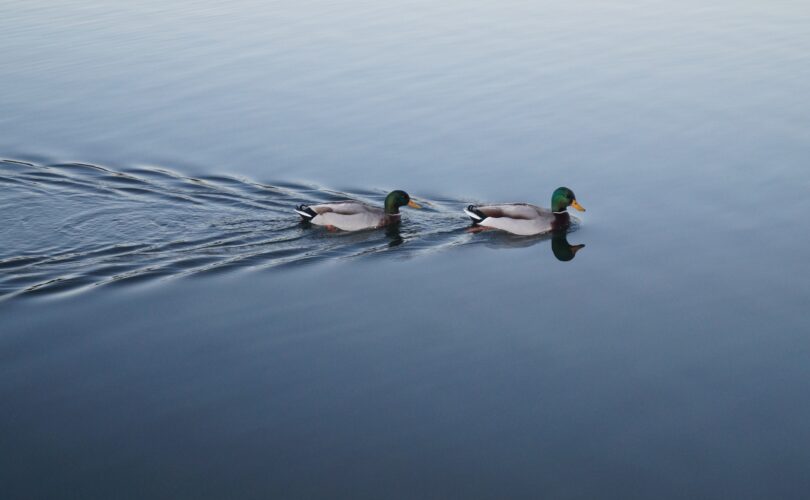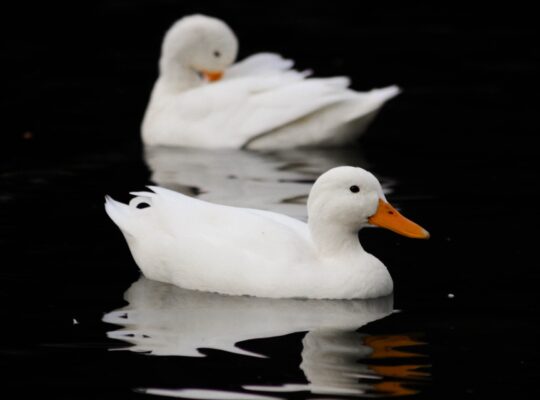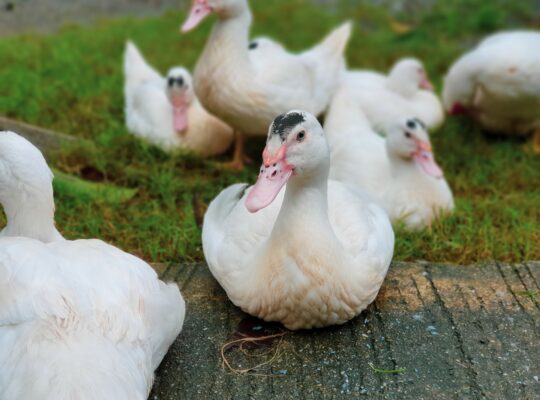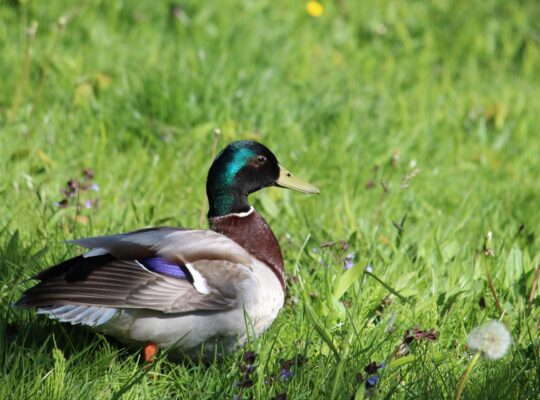Ducks have been seen mating numerous times yearly throughout their breeding season, normally in the spring and summer months. However, the frequency of their mating activity may vary based on several circumstances, including the availability of appropriate breeding partners, environmental conditions, and the specific species of duck.
Male ducks, usually known as drakes, are more active when starting mating activity. Guys may compete with other males to access females by pursuing them or displaying dominance. After a couple has established, they may mate numerous times in a single day or over several days.
Mating is often a quick procedure that lasts just a few seconds. The male duck climbs the female and inserts his phallus, known as a “drake’s penis,” during mating. This penis is famous for its size and corkscrew form, which helps the male to deposit sperm more successfully in the female’s reproductive system. After mating, the female will deposit eggs, which she will incubate until they hatch.
Generally, duck mating behavior varies greatly, although it is often related to their breeding season and the availability of acceptable mates. Ducks have developed several unique reproductive characteristics that enable them to breed effectively in their specific ecological niches.
Duck mating Signs?
Duck mating comprises several physical and behavioral cues often employed by both males and females to indicate their interest in mating and form pair bonds. Some of the most typical symptoms of duck mating are as follows:
Both male and female ducks may vocalize to attract a partner or to advertise their desire to pair. Men may whistle or grunt, while females may quack or trill.
Male ducks often participate in dominance and courting displays, which may involve puffing out their feathers, lengthening their necks, and bobbing their heads. Females may also exhibit physical behaviors such as shaking their tails or dropping their heads.
Male ducks may chase female ducks to commence mating behavior. To attract the attention of females, they may pursue them around the pond or perform aerial displays.
Mounting behavior: When a male successfully courts a female, he will mount her to mate. Climbing onto her back and pushing his penis into her reproductive system is common.
Nesting behavior: Females will normally lay eggs in a nest they build in a safe spot, near water or in a protected region, after mating. They may also participate in activities like preening and fluffing up their feathers to prepare for the nesting process.
Ultimately, duck mating is complicated, including a wide range of physical and behavioral cues. Both men and females utilize these indicators to form pair bonds, attract mates, and eventually breed effectively.
Do male ducks force female ducks to mate?
It is not typically correct to state that male ducks “force” female ducks to mate, even though during the mating process, male ducks may engage in violent behavior against female ducks. Male ducks may participate in behavior such as dominance or rivalry with other males. They may also chase or seek female ducks to begin the mating activity. Yet, female ducks can choose the males with whom they will mate, and they may choose to reject or avoid mating with males with whom they do not want to do so.
Male ducks of some ducks, such as mallards, are known to show extremely aggressive mating behavior, which may occasionally entail physically pushing themselves onto females. Mallards are one example of such a species. This behavior, which is known as “forced copulation,” is commonly understood to be a type of sexual coercion and is usually considered to be detrimental to female ducks.
Nevertheless, it is essential to emphasize that not all male ducks display this behavior and that many ducks have developed mating systems that entail consensual mating between males and females. It is also crucial to note that not all male ducks exhibit this behavior.
Finally, duck mating behavior may be fairly sophisticated and can vary based on several circumstances, including the specific duck species, environmental conditions, and the availability of eligible partners. The availability of acceptable partners is another element that might impact duck mating behavior. While male ducks may engage in competitive or aggressive behavior during the mating process, it is ultimately up to the females to choose their mates and reject or ignore unwelcome advances made by the males.
How long do male and female ducks stay together?
The amount of time male and female ducks remain together depends on several variables, including the type of duck and the environmental circumstances. Male and female ducks may only remain together for the mating season in certain situations. Still, in others, they may create longer-lasting pair connections that continue beyond the breeding season.
Males and females of certain duck species, such as the wood duck, create pair bonds that survive just one mating season. The couple will engage in wooing and mating rituals during this period, and the female will normally deposit eggs and incubate them until they hatch. Following the mating season, the couple will usually split ways, and the male may look for new companions in future breeding seasons.
Males and females in other duck species, such as the mallard, may create longer-lasting pair connections beyond the mating season. These couples may stay together for months or years, engaging in activities like preening, nesting, and rearing children. Even in these species, pair connections are not always permanent, and males and females may seek different mates in subsequent mating seasons.
Generally, the time male and female ducks spend together varies greatly depending on the species and the conditions. Although some couples may only be together for the mating season, others may build longer-lasting pair relationships beyond the breeding season. Duck mating behavior is complicated and influenced by several variables, including the availability of appropriate mates and environmental circumstances.
Finally, duck mating is a complicated process that varies based on several circumstances, including the type of duck and the environmental conditions. While male and female ducks may display various physical and behavioral signs during the mating process, such as vocalizations, physical displays, pursuit behavior, mounting behavior, and nesting behavior, females ultimately can choose their mates. They may reject or avoid males with whom they do not wish to mate.







